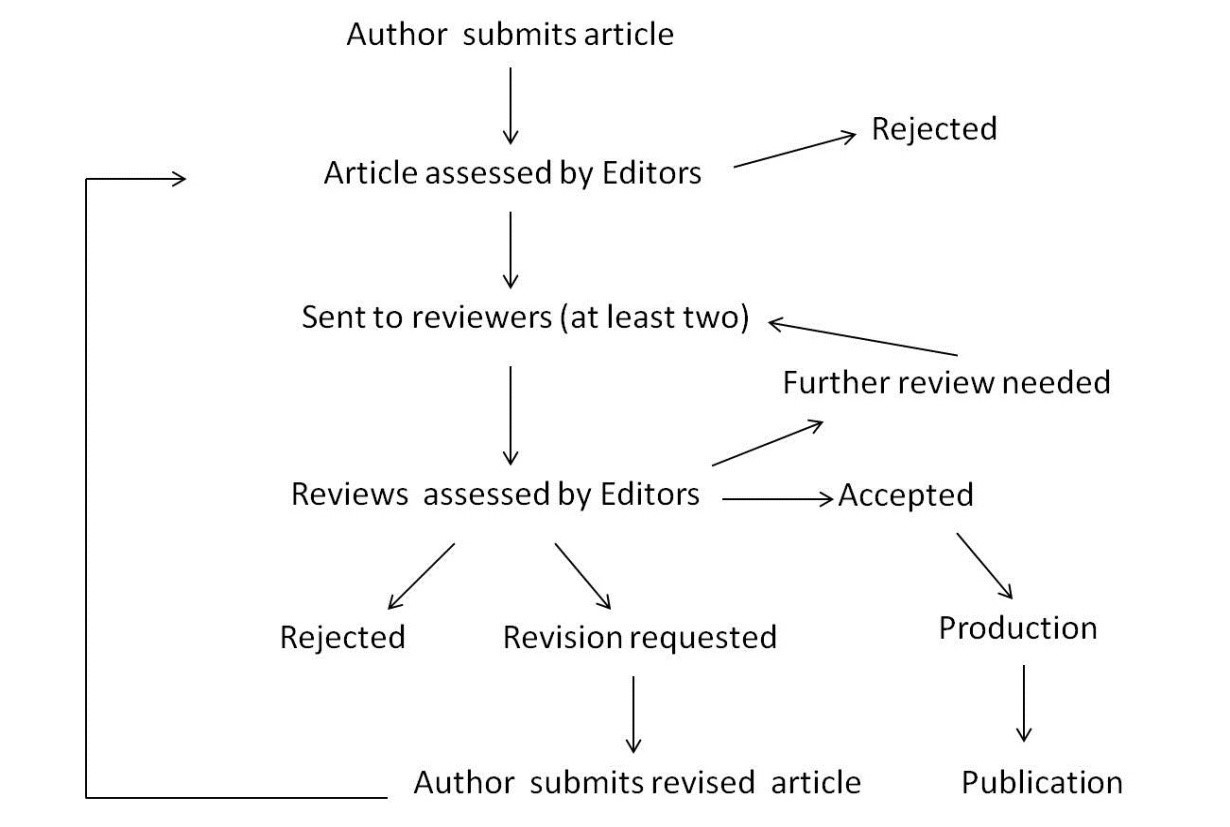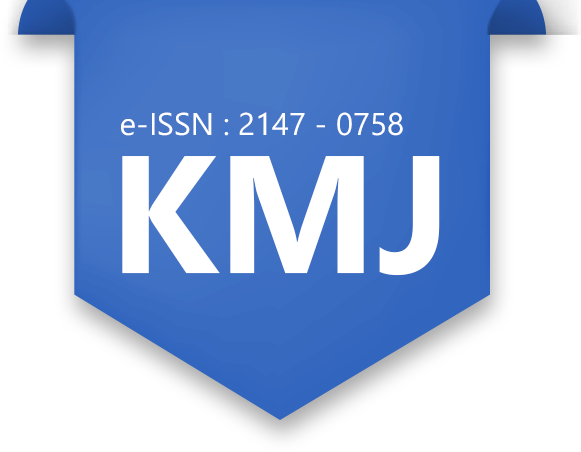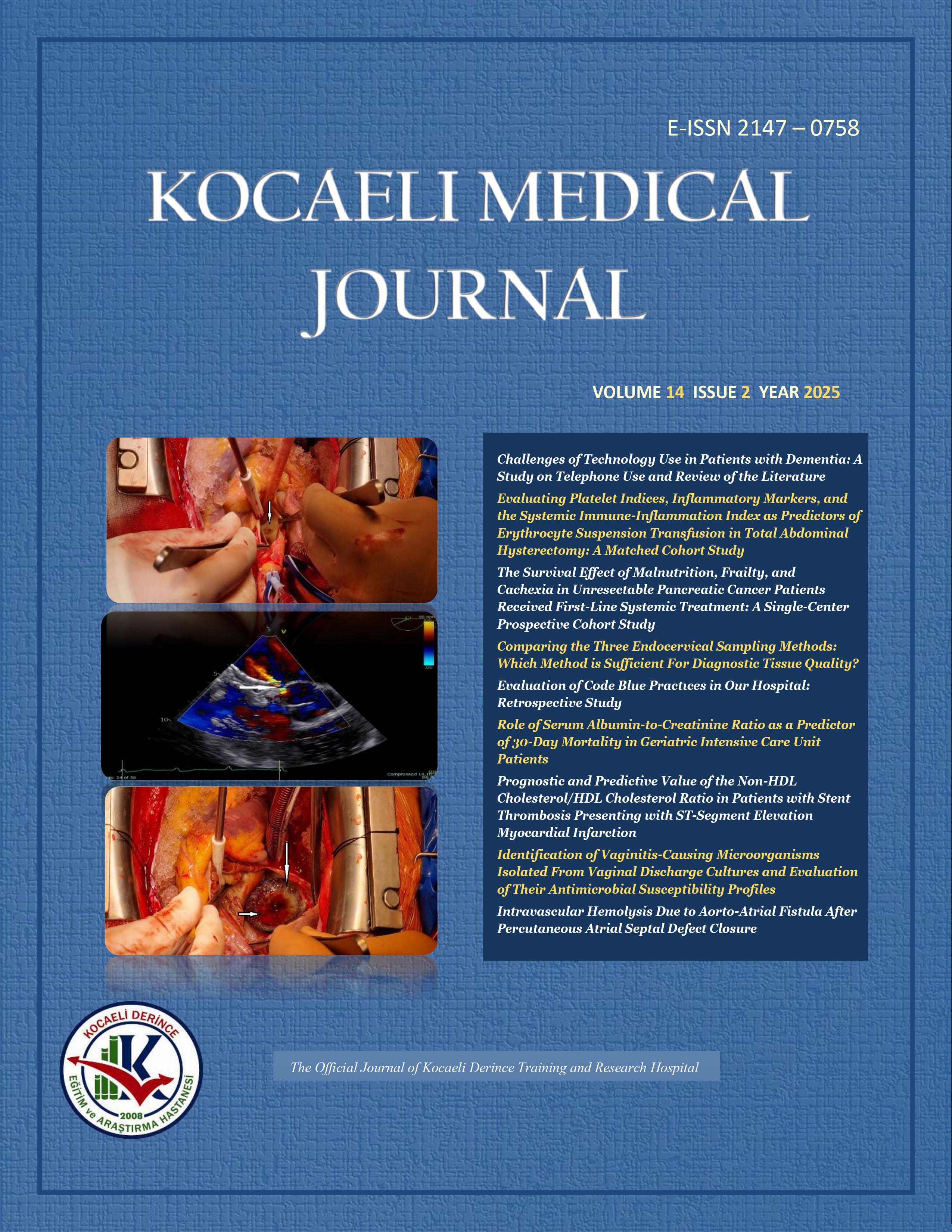
Peer Review Process For Reviewers
Peer Review Process For Reviewers
A checklist preview for an initial evaluation which will be asked to complete by editorial office during the initial review process can be found in below.
Checklist Preview
General
Pages are numbered consecutively, starting with the title page.
Only standard abbreviations are included.
For human and animal research, informed consent and institutional review board approval is addressed in the Materials and Methods.
Manuscript Text
The title, author name(s) and major degree(s), affiliation(s), and the source(s) of funding for the work or study are provided.
The manuscript has not been published previously or submitted recently for publication.
References
References correspond to the reference style specifications of The Kocaeli Medical Journal
Each reference in the reference list is cited in the main text.
Abbreviations of journal titles conform to those used in Index Medicus, National Library of Medicine.
Tables
Table(s) (with its title) appear(s) on a separate sheet at an another file.
Figures
Each figure and graphic are cited in the text.
The articles which be written in accordance with journal ’s rules will be sent Editors by editorial office.
The manuscript will be evaluated by one or more members of the Editorial Board who will decide whether or not to send it out for peer review. The paper may be rejected without being reviewed any further at this stage.
The handling editor has begun to invite peer reviewers to evaluate the submission. As responses are received, further invitations are issued, if necessary, until the required number of acceptances is obtained this should be at least 2. Potential reviewers consider the invitation against their own expertise, conflicts of interest and availability. They then accept or decline. If possible, when declining, they might also suggest alternative reviewers.
The Responsibility of the Peer Reviewer
Before reviewing, please take care whether the article you are being asked to review match your expertise. You will be responsible providing respectful, constructive, and honest feedback to authors about their submission. It is appropriate for the Peer Reviewer to discuss the strengths and weaknesses of the article, ways to improve the strength and quality of the work, and evaluate the relevance and originality of the manuscript. If you have any conflict of interests, please do not hesitate to contact the receiving editorial office.
Please kept in mind the following questions during evaluation process - they'll help you form your overall impression:
- What is the main question addressed by the research? Is it relevant and interesting?
- How original is the topic? What does it add to the subject area compared with other published material?
- Is the paper well written? Is the text clear and easy to read?
- Are the conclusions consistent with the evidence and arguments presented? Do they address the main question posed?
- If the author is disagreeing significantly with the current academic consensus, do they have a substantial case? If not, what would be required to make their case credible?
- If the paper includes tables or figures, what do they add to the paper? Do they aid understanding or are they superfluous?
If you are evaluating Clinical or Experimental Research, please answer yes or no for each of the following questions:
- Is the purpose of the study clearly stated?
- Is the plan of the study appropriate and the methods clearly stated?
- Are the criteria for inclusion in the study clearly reported? Is the number of cases sufficient and the basic characteristics defined?
- Is the analysis of the data systematic and the findings reliable?
- Are the comments adequate and logical? Supported by evidence?
If you are evaluating Case Report, please answer yes or no for each of the following questions:
- In the Introduction section of the case report, is the problem adequately defined?
- In the case report, are the patients and the presentation subject sufficiently defined?
- Is discussion section enough to discuss the case report?
If you are evaluating Review article, please answer yes or no for each of the following questions:
- Does the review cover sufficient information on the subject?
The following questions apply to all types of articles evaluated
- Are the figures and tables adequate and necessary?
- Are the references current? Are there any important national articles previously published on the same issues as references?
- Do you want to continue your reviewer activity of Kocaeli Medical Journal? You can write your report about the article in the Comments section.
Criticisms & Confidential Comments to Editors
Our journal give reviewers the option to provide some confidential comments to editors. Often this is where editors will want reviewers to state their recommendation - see the next section - but otherwise this area is best reserved for communicating malpractice such as suspected plagiarism, fraud, unattributed work, unethical procedures, duplicate publication, bias or other conflicts of interest.
However, this doesn't give reviewers permission to 'backstab' the author. Authors can't see this feedback and are unable to give their side of the story unless the editor asks them to. So, in the spirit of fairness, write comments to editors as though authors might read them too.
The Recommendation
Recommending Acceptance
If you're recommending acceptance, give details outlining why, and if there are any areas that could be improved. Don't just give a short, cursory remark such as 'great, accept'.
Recommending Revision
Where improvements are needed, a recommendation for major or minor revision is typical. You may also choose to state whether you opt in or out of the post-revision review too. If recommending revision, state specific changes you feel need to be made. The author can then reply to each point in turn. Give detailed and informative feedback describing ways that how authors could improve the research.
Recommending Rejection
If recommending rejection, state this clearly in your review. Avoid making critical confidential comments to the editor while being polite and encouraging to the author - the latter may not understand why their manuscript has been rejected.

Reviewed
All reviews have been received.
Waiting for Final Decision
The handling editor considers all the returned reviews before making an overall decision. If the reviews differ widely, the editor may invite an additional reviewer so as to get an extra opinion before making a decision.
Decision (Minor revision, major revision, accepted, or rejected)
The editor sends a decision email to the author including any relevant reviewer comments. Whether the comments are anonymous or not will depend on the type of peer review that the journal operates. If accepted, the paper is sent to production. If the article is rejected or sent back for either major or minor revision, the handling editor should include constructive comments from the reviewers to help the author improve the article. At this point, reviewers should also be sent an email or letter letting them know the outcome of their review. If the paper was sent back for revision, the reviewers should expect to receive a new version, unless they have opted out of further participation. However, where only minor changes were requested this follow-up review might be done by the handling editor.














